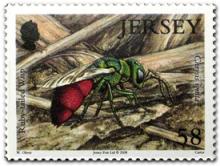'They’ve turned the Environment into the Experiment – and WE are all the experimental SUBJECTS'
Phil Chandler's audio-interview with Tom Theobald - the Colorado bee-farmer who uncovered the duplicity of the American EPA - in licensing Clothianidin against the official judgement of their own scientific officers. The scientists noted that as a nicotinoid, Clothianidin was 'highly toxic to bees by contact and oral exposure' and that is was 'highly mobile' in soil and groundwater - very likely to migrate into streams, ponds and other fields, where it would be absorbed by wildflowers - and go on to kill more bees and non-target insects like butterflies and bumblebees (attached). They judged it to be many times more toxic than its sister nicotinoid Imidacloprid, which is "7,000 times more toxic to bees than DDT". Despite the strong advice of their own scientists, the American EPA gave Clothianidin a conditional license in 2003 and it was planted on 88 million acres of American maize (corn, sweetcorn). Since 2004 - over a million beehives have died across America - and many science studies point the finger at Clothianidin (and Imidacloprid) , because in the vast monocultural maize prairies of America - bees rely heavily on maize pollen for the protein to feed their young.
The full audio interview can be listened to as a Podcast online at:






